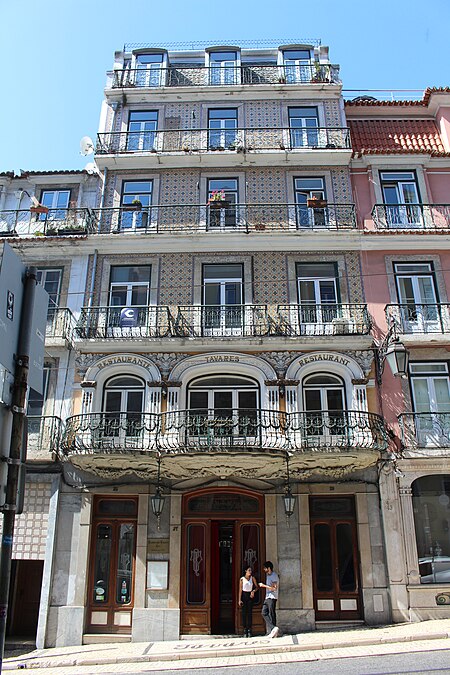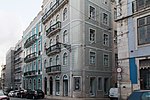Tavares (restaurant)
1784 establishments in PortugalEuropean cuisine stubsEuropean restaurant stubsPortugal stubsRestaurants in Portugal

The Tavares is a historic restaurant located in Lisbon, Portugal that has operated continuously since 1784. It is the oldest restaurant in Lisbon, having operated in the same location (though not the same building) since this time. It is the second oldest restaurant in the Iberian Peninsula, and has been classified as a national landmark in Portugal. The restaurant was frequented by writer Eça de Queiroz, who referenced it in his book Os Maias.
Excerpt from the Wikipedia article Tavares (restaurant) (License: CC BY-SA 3.0, Authors, Images).Tavares (restaurant)
Rua da Misericórdia, Lisbon Bairro Alto
Geographical coordinates (GPS) Address Nearby Places Show on map
Geographical coordinates (GPS)
| Latitude | Longitude |
|---|---|
| N 38.711345 ° | E -9.143161 ° |
Address
Rua da Misericórdia 23,25
1200-466 Lisbon, Bairro Alto
Portugal
Open on Google Maps








